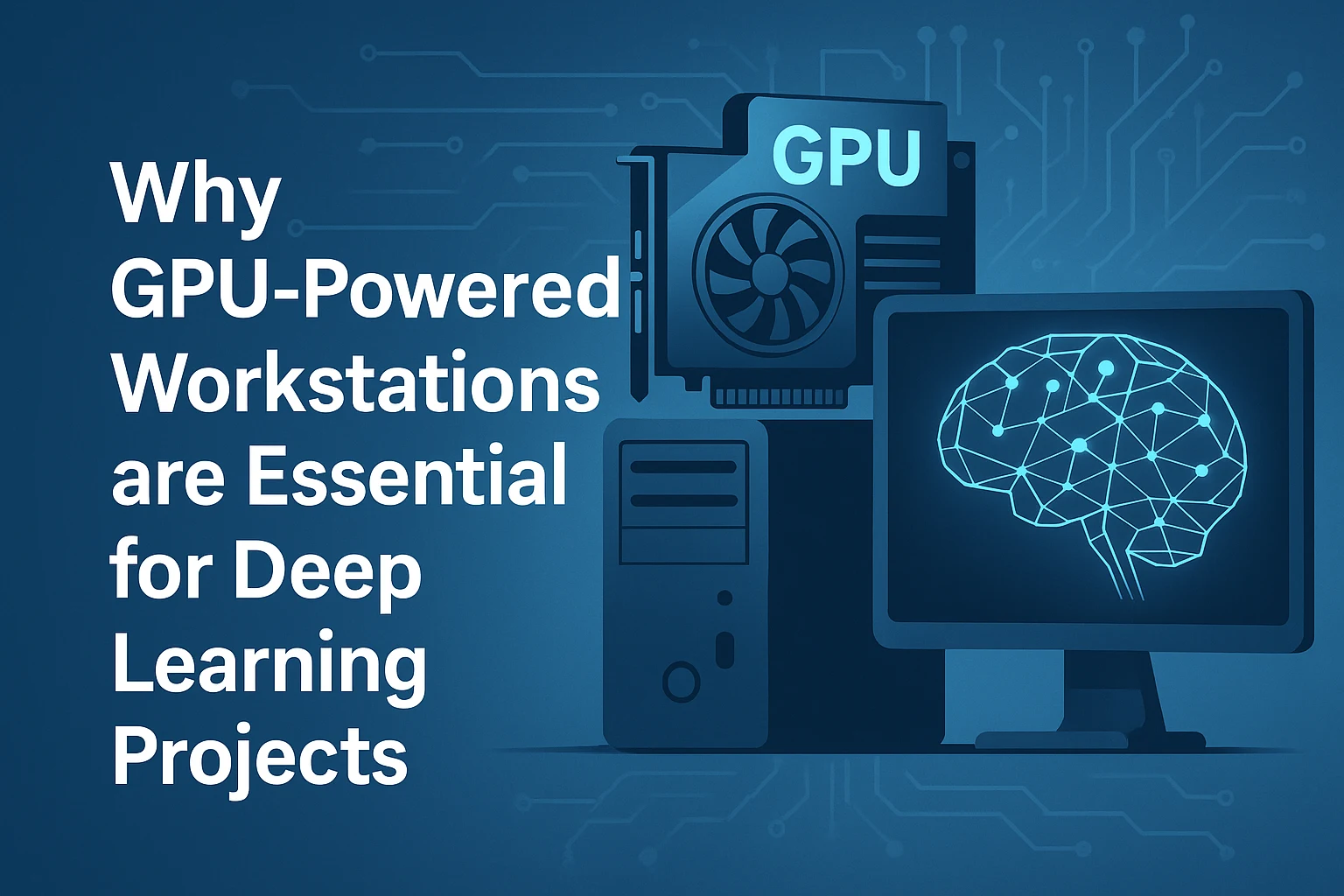Key Takeaways:
Deep learning relies heavily on processing power, and GPU-powered workstations provide the capability to handle complex computations efficiently. With more cores and superior memory bandwidth, GPUs accelerate model training and inference, making them indispensable for deep learning applications. Their scalability and versatility further support many projects, from simple neural networks to sophisticated models with millions of parameters.
Table of Contents:
- Introduction
- The Importance of GPUs in Deep Learning
- Architectural Benefits of GPUs
- Efficiency and Performance
- Scalability and Flexibility
- Cost-Effectiveness
- Conclusion
Introduction
Deep learning has emerged as a transformative technology, powering advancements across various fields such as healthcare, autonomous driving, financial modeling, and more. Central to the success of deep learning projects is the computational power that facilitates rapid data processing and model training. In this regard, GPU-powered workstations have become essential tools due to their parallel processing capabilities, which are crucial for managing the intensive workloads inherent in deep learning tasks. These workstations, equipped with graphics processing units (GPUs), efficiently handle vast amounts of data, making them ideal for training and deploying complex neural networks. The growing complexity of models and datasets in deep learning necessitates hardware that can keep pace, providing speed, accuracy, and scalability, which makes GPU-powered workstations indispensable for developers and researchers worldwide.
The Importance of GPUs in Deep Learning
Deep learning involves training neural networks with numerous layers and parameters, a process that demands extensive computational resources. While capable of handling everyday computational tasks, general-purpose CPUs often fall short when executing the massive parallel computations needed for deep learning efficiently. This is where deep learning tech comes into play, utilizing the specialized architecture of GPUs. GPUs consist of hundreds to thousands of smaller, more efficient cores that manage multiple tasks simultaneously. Unlike traditional CPUs optimized for sequential processing, GPUs excel at executing large-scale matrix multiplications, which are critical for the training process of neural networks. The high core count and superior memory bandwidth of GPUs significantly expedite these computations, reducing training times and enabling more complex models to be executed efficiently. This capability makes GPUs an integral part of any deep learning setup, facilitating rapid prototyping and testing of AI algorithms.
Architectural Benefits of GPUs
GPUs are architecturally optimized for the dense and complex mathematical operations that underpin deep learning algorithms. Their design allows for concurrent computations—executing multiple operations at once, which is key to dramatically speeding up tasks like matrix operations and vector processing essential for neural networks. This parallel architecture is particularly beneficial for convolutional neural networks (CNNs) and recurrent neural networks (RNNs), which are often used in image and sequence data processing. The architectural benefits of GPUs enhance processing speed and improve the precision and accuracy of deep learning models. These attributes facilitate the development of more robust and reliable AI systems, enabling researchers and developers to push the boundaries of what neural networks can achieve, from advancing medical diagnostics to enhancing automated systems.
Efficiency and Performance
The efficiency and performance of GPU-powered workstations are unmatched in deep learning. With the capacity to perform billions of calculations per second, GPUs are designed to handle the heavy lifting involved in training complex models. Depending on the model size and complexity, they transform what would typically be weeks of training on a CPU into days or even hours on a GPU. This efficiency extends to inference, where the trained models are deployed to swiftly generate predictions on new, unseen data. The performance gains from GPUs translate directly into faster innovation cycles and reduced time-to-market for AI applications. This competitive edge is crucial in rapidly evolving markets where being first often translates to industry leadership, making GPUs not just a tool of efficiency but a strategic asset.
Scalability and Flexibility
One of the standout features of GPU-powered workstations is their scalability and flexibility. As deep learning projects grow, they require a system that can scale with increasing complexity and data size. GPUs allow for seamless scaling across multiple units, distributing workloads efficiently and ensuring that resources are optimized. Modern deep learning frameworks and others provide robust support for multi-GPU configurations. This feature allows data scientists and engineers to expand their computational capabilities without extensively modifying their existing systems. Integrating with cloud resources further enhances this scalability, facilitating hybrid approaches that combine on-premises GPU power with the virtually limitless capabilities of cloud infrastructure, thus providing unmatched flexibility catering to diverse project demands.
Cost-Effectiveness
While the initial investment in GPU-powered workstations might seem considerable, they are cost-effective and highly advantageous in the long run. The significant reduction in training times and operational efficiencies translates to lower energy consumption and resource utilization. Engineers spend less time on training models, and organizations can deploy solutions more rapidly, which reduces overhead costs and accelerates project timelines. Moreover, the longevity and versatility of GPUs and their compatibility with emerging software frameworks ensure that the investment remains relevant as technology evolves. This future-proof aspect of GPUs makes them not just a choice for immediate performance but a strategic investment in the continuity and effectiveness of deep learning initiatives.
Conclusion
GPU-powered workstations have become the backbone of deep learning projects, providing the necessary computational muscle to train and deploy sophisticated models efficiently. Their parallel processing capabilities and architectural optimizations deliver unparalleled performance across deep learning tasks. As deep learning continues to revolutionize various industries, the role of GPUs will become increasingly significant. These powerful tools support the current demands of AI development and lay a sturdy foundation for future advancements. By investing in these systems, organizations can harness the full potential of AI, advancing innovation, and maintaining a competitive edge in a dynamic landscape. For academic research or commercial applications, GPUs offer the flexibility, scalability, and efficiency necessary for the next generation of profound learning breakthroughs.
